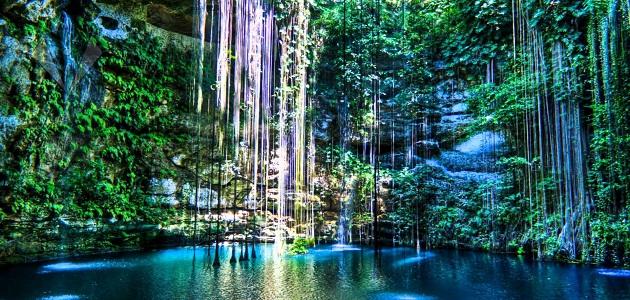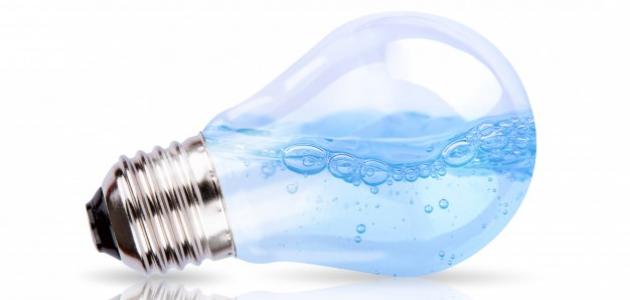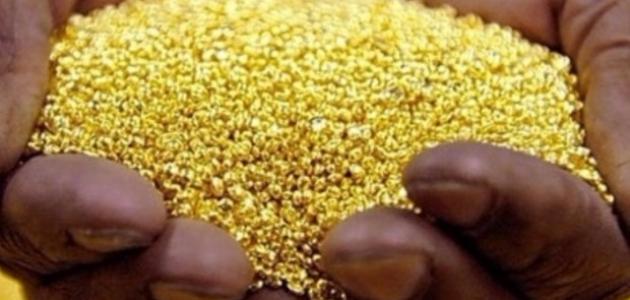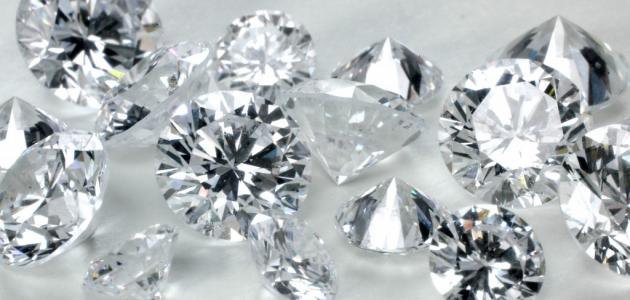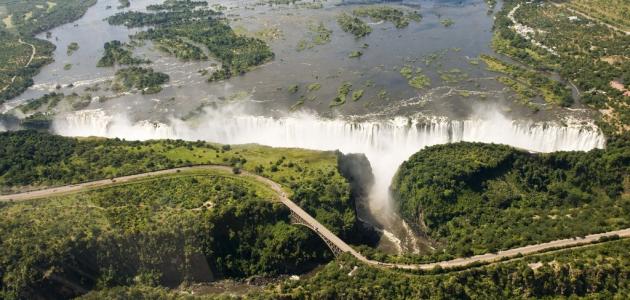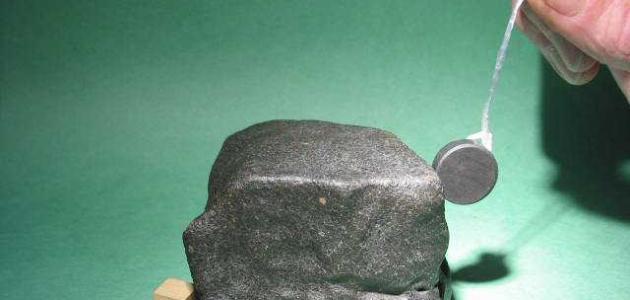Definition of groundwater
Groundwater is one of the important sources of water that is stored inside the earth in the spaces between sand, soil, and rock fragments. This water forms water layers known as aquifers (in English: Aquifers) that form a reservoir or basin of water. Groundwater is considered part of the natural water cycle on Earth, as it seeps into the ground when it rains through the soil and rock fragments, and filters through the porous rocks to reach an area where it collects, and the collected water level separates the area saturated with water or groundwater layers (in English: Aquifer zone ), and the unsaturated zone or vadose zone - which is a moist area directly below the surface of the earth through which water passes but does not fill all the spaces between rocks and soil -, where water tends to move downward through the unsaturated zone until it reaches the saturated zone, In the saturated zone, the water moves horizontally, depending on the water slope or water pressure gradient, moving from the highest slope to the lowest slope. Some of this water may filter during its horizontal movement outside the basin to join the ocean water.
Groundwater formation factors
There are two main factors responsible for the presence of groundwater:
- gravity: Where water seeps under the influence of gravity into the layers of the earth.
- rock type: The type of rocks present under the surface of the Earth is considered the biggest factor in the formation of groundwater. It may be difficult for gravity to influence the water and make it penetrate and move down through dense rocks such as solid granite. However, the rocks present beneath the Earth’s surface vary between sand rocks, granite, and limestone, and differ from each other in quantity. The voids in which water can collect. The voids may increase due to the breaking of rocks, which gives the water larger spaces to remain in them. Water may dissolve some rocks, such as sand rocks, which increases the size of the voids and thus increases the amount of stored water. In some areas, there may be layers of sedimentary rocks that appear clearly. When looking at a cross-section of the Earth, we find layers consisting of rocks with a higher porosity than other rocks, which allows water to move more freely through them, and if these porous layers are present above layers consisting of dense rocks such as granite, or clay layers that do not allow water to pass through them Water gets trapped in the porous layers, and moves horizontally through the aqueous layer until it finds an outlet from which it flows out, like a river.
The amount of water that the soil can retain depends on the extent of its porosity (in English: porosity), while the amount of water that permeates through the soil depends on the extent of its permeability (in English: permeability). The water that is absorbed and retained varies according to the characteristics of the soil surface, and the permeability of the soil surface is considered one of the Important matters that are monitored by scientists, because its decrease causes an increase in the amount of water that remains on the surface, which increases the possibility of floods occurring, which usually increase in the winter and early spring due to the freezing of the soil surface and its lack of permeability, which causes rainwater and melted ice water to remain. on the surface to form running surface water.
Read also:How is iron made?Recharge and discharge of groundwater
Groundwater recharge and natural discharge
Groundwater levels vary from one season to another. They increase at the end of the rainy seasons and decrease at the end of the dry seasons. Therefore, rainwater is considered the main feeder for groundwater. Areas in which rainfall amounts are high, such as areas near mountain peaks, are classified as groundwater recharge areas in comparison. With the low-lying areas adjacent to it, the discharge of groundwater depends on its depth, as natural discharge of shallow groundwater occurs in valleys and low-lying areas, while deep groundwater discharges into the oceans.
Groundwater recharge and artificial discharge
Groundwater may be subject to artificial discharge by humans, and it is pumped from the aquifers in which it is located to meet human needs. Some developed societies also recharge groundwater basins artificially in order to preserve water resources. Depending on the geological and hydrological conditions of the groundwater basin, the water level may decrease. Tens of meters and continues for long periods, which may lead to the drying up and disappearance of groundwater wells.
Groundwater movement
Movement speed
Groundwater is constantly moving, but its movement is slower than the movement of surface water due to the narrow passages through which it passes through pores and voids, its contact with debris and rocks, and due to its being affected by static electrical forces, as its speed is about 0.00002 km/hour, while the speed of river water flow is about 30 km/h, and the speed of movement of sea currents is 3 km/h.
Read also:How is water treated?movement direction
Water usually moves vertically downward due to the influence of gravity, and may move upward under the influence of pressure differences. It moves from areas of high pressure, such as the layers located under mountain peaks, to areas of low pressure, such as the layers located below valleys, just as water placed in a U-shaped tube moves and falls on the side that is affected by higher pressure, and rises. On the other hand, the Earth’s surface can be divided according to the movement of groundwater into two parts: They:
- Groundwater recharge areas: Recharge areas filter water and move downward to the water-saturated zone or groundwater basin.
- Groundwater discharge areas: It emerges from groundwater discharge areas and moves toward the surface to lakes, streams, and springs.
The importance of ground water
Groundwater is an important natural source of fresh water, as it represents 30% of fresh water in the world, and the remaining percentage is distributed among water in the form of ice and snow, which represents 69%. Only 1% of fresh water is found in rivers and lakes, and about a third of human consumption depends on From fresh water to groundwater, and in some areas it is completely relied upon, and groundwater has an important role in the economy, irrigation of crops, and in the food industry. As for its importance to the environment, groundwater plays an important role in maintaining the water level in rivers, lakes and wetlands. When it flows into it from within the ground, especially in dry seasons when its direct supply from rainwater decreases, this contributes to preserving the wildlife and plants that depend on it, and its role in maintaining water levels in dry seasons maintains navigation through inland waters and rivers. .
Read also:gold waterGroundwater is stored in deep layers beneath the surface of the earth, which maintains its quality and protects it from pollution. Therefore, it is suitable for direct consumption without the need for high costs to extract or treat it. However, it is important to preserve this vital resource from depletion or pollution.
Groundwater characteristics
Groundwater moves from the recharge areas to the discharge areas, and undergoes chemical and physical changes, as it mixes with other groundwater and interacts with the minerals present in the soil and rocks through which it flows, which may affect the quality of the water. Since water is a natural solvent for several substances, we find groundwater Flowing in the form of springs contain dissolved minerals and gases, which give spring water its distinctive taste. The most common dissolved minerals are: calcium, magnesium, sodium, potassium, chloride, carbonate, and bicarbonate. However, if the amount of dissolved minerals in the water exceeds a thousand milligrams per liter, it is salty and not suitable for drinking. Water may contain a lot of calcium and magnesium to become hard water. The hardness of water is expressed by the amount of calcium carbonate dissolved in it, which is mainly found in limestone. Water is classified as non-hard if it contains less than 60 milligrams/liter of salts. As for water Very hard contains more than 180 mg/L.
Groundwater pollution
Natural causes
Some impurities are naturally present in water, due to the dissolution and erosion of part of the rock components upon contact with water. That is, the chemical properties of water change as it percolates through the soil and wet layers beneath the surface of the earth to the aquifers in which groundwater collects. Therefore, the groundwater content increases. Of dissolved minerals, some of which may give the water an unacceptable taste or smell, so groundwater is classified as polluted water and unfit for drinking when the amount of dissolved minerals increases, or when the water contains manufactured chemicals, and an increase in some minerals such as iron, manganese, and sulfates may cause With some negative effects, in some areas of the United States of America, such as the Piedmont and Blue Ridge regions, iron rust-colored spots appear on the ceramics of sinks and bathrooms due to an increase in the percentage of iron in their water, and the percentage of sulfates in the groundwater of areas where there is It contains coal and natural gas, which causes an unpleasant odor to the water. Groundwater may also contain bacteria that were transferred to it from the soil, which may change the taste, smell, and color of the water.
human causes
Groundwater is affected by pollutants resulting from human activities, just as surface water is affected. Although these pollutants reach the groundwater slowly, as they continue to be released, they accumulate and their quantity gradually increases. Pollutants seep into groundwater reservoirs from several sources, including:
- Human waste: Pollutants and bacteria reach water from septic systems and landfills near groundwater tanks and wells.
- Agricultural activities: Agricultural activities include chemical fertilizers and pesticides used on farmland, which leaches with the water into nearby aquifers.
- Industrial waste: This is through the unsafe disposal of waste resulting from industrial activities, such as petroleum materials, detergents, and hazardous chemicals.
